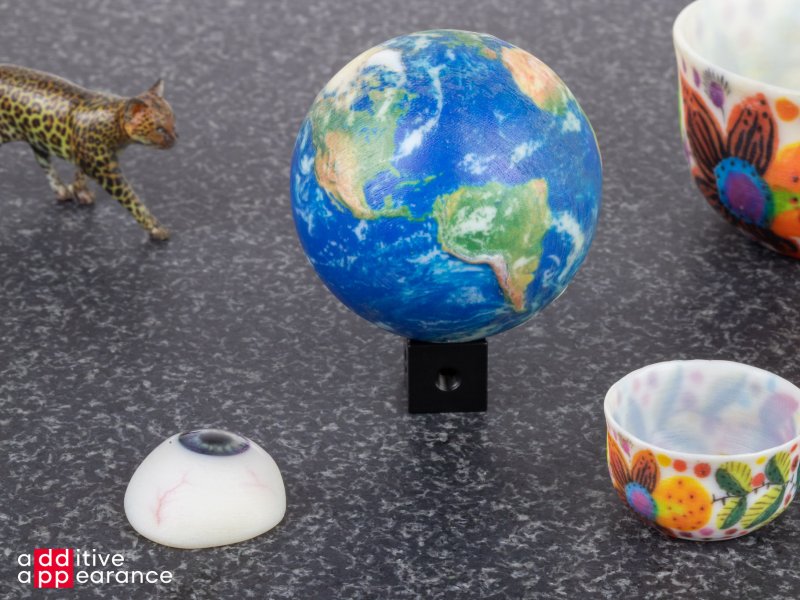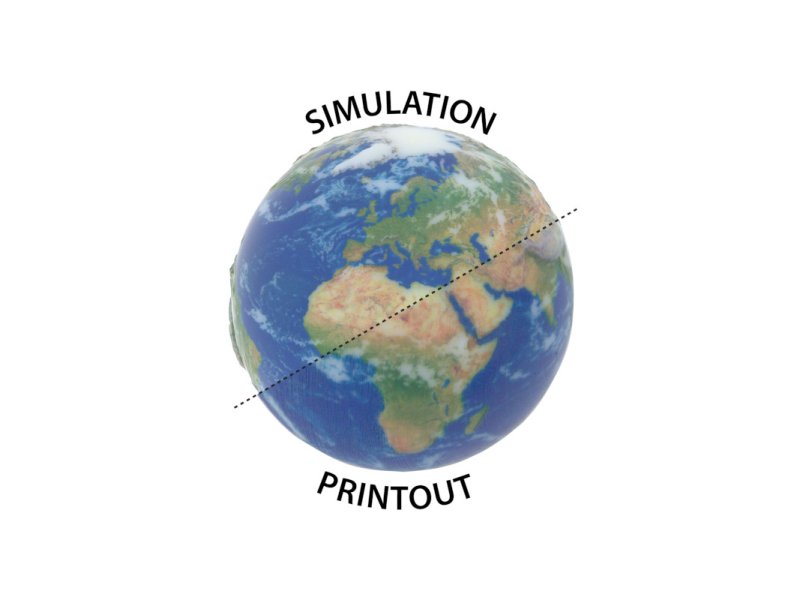University spin-off goes beyond the boundaries of contemporary 3D printing

Charles University, on behalf of its subsidiary Charles University Innovations Prague a.s. (CUIP), establishes a spin-off company Additive Appearance s.r.o., which launches a unique software for reliable simulation of 3D models for 3D printing. At a time when designers and engineers are increasingly using 3D printing to create physical prototypes for their designs, this offers a simple way to print the resulting prototype with maximum similarity to the final product.
Additive Appearance and their software are based on unique knowledge of computer graphics and years of research conducted by scientists from the Faculty of Mathematics and Physics at Charles University. They developed algorithms that allow to predict the appearance of a 3D model as good as if it were physically produced by a PolyJet 3D printer.
Currently, this type of 3D printers are able to produce objects with complex appearance, but existing software, which is adapted from 2D printing, can not access the full gamut of appearance that the hardware can produce. Additive Appearance's software is focused on the visual appearance of the resulting 3D prints and will not only achieve high color accuracy, but also the best texture sharpness, which has been very difficult to achieve with existing technologies. The team is building the software with components from artificial intelligence to form a multi-step virtual optimization that is running before the printing. By using this software in combination with PolyJet 3D printers, the resulting physical prototypes will provide designers with a unique opportunity to communicate their vision to clients on prototypes as believable as the intended final product.
Above all, the goal is to expand the availability of the software regardless of hardware limitations such as the brand of printer – to benefit every user possible. Another goal for the future is the production of the final parts themselves, which, thanks to these technologies, will not only have the desired look, but also will be fully functional. “With our great team and joint partners, we strive to get the industry a few steps closer to our dream, the Star Trek Replicator. In our first step, we employ beautiful math and algorithms to help fabricate beautiful, accurate colors in 3 Dimensions,” says one of the founding members and CEO, Thomas Nindel, Ph.D. Additive Appearance is coming to market at a crucial time when this type of 3D printer is transitioning from only industrial applications to a wider audience.
Beyond its current application in product design, this technology is starting to disrupt a wide range of other industries where appearance matters. In fashion, designers are printing intricate details directly onto fabric. Museums are looking to preserve and restore their cultural heritage artifacts with the combination of 3D scanning and 3D printing. In the movie and toy industry, high-priced collectibles are increasingly 3D printed to achieve captivating details that astonish the fans of pop culture, movies and computer games. Currently, 3D printing is also being used in the medical sector, for which the Additive Appearance software technology presents potential benefits. Exemplary, in the production of a wide range of types of prostheses that match the individuals.
Otomar Sláma, the Chairman of the Board of CUIP thinks that “Additive appearance has emerged at the perfect time and represents something of a pioneer in the 3D printing software market. It is always a pleasant journey to cooperate with a spin-off company which is driven by their passion.”
The spin-off idea originated in the Computer Graphics Group (CGG) at the Faculty of Mathematics and Physics: a group with a research focus on understanding and replicating visual reality using computer algorithms. Results of their research are already being used in many 3D rendering systems for CGI in movies and product visualization. Their unique know-how lies in predictable and accurate light simulation, a direction in which they are,amongst other things, coordinating a prestigious European research project on the topic. Industrial research collaborators include Chaos Group, Intel and Unity.
CUIP Press Release





